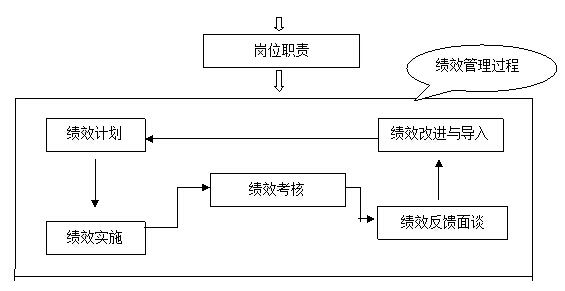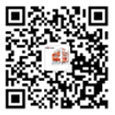企业质量信用报告——江苏腾宇机械制造有限公司
发布时间:
2025-01-09
腾宇公司质量信用报告编制说明:
1、腾宇公司公布的质量信用报告本着客观、公正的态度进行编写,报告内容真实、有效,符合企业实际情况,报告内容包括了提高企业员工的质量意识、质量组织管理体系、质量理念等。
2、报告发布周期2020年12月至2021年12月,报告内的数据真实。
3、报告的获取详查我公司网站:www.tymachine.cn
目 录
1、董事长致辞
2、企业简介
3、提高企业员工的质量意识
4、质量组织管理体系
5、质量理念
6、内部质量管理
7、企业宗旨、质量/环境/职业健康安全方针和目标质量承 诺
5、法规保证体系
9、设备保证体系
10、积极采用国际标准及国外标准
11、产品认证认可体系
12、质量控制体系
13、绩效考核办法
14、企业文化 注重质量理念
15、团队稳定 择优凝聚人心
16、售后服务
17、确立多种方式与相关方进行沟通
18、道德行为
19、建立完善的顾客满意测量系统
20、员工绩效管理系统
21、建立和谐员工人文环境...
22、员工满意度的测评
23、建立了高标准的工作环境基础设施
24、建立健全安全基础设施的管理,为企业发展创造良好的安全环境
25、结束语
一、董事长致辞
腾宇公司衷心感谢社会各界、广大用户的厚爱、支持与合作!
长期以来腾宇人永不满足、开拓进取,致力于建材装备产业的振兴与发展,不断推陈出新,取得了令人瞩目的成绩,“腾宇商标”被认定为江苏省著名商标,腾宇牌砌块成型机被评为省产品。
在新的世纪里,我们将继续弘扬“诚信、务实、开拓、进取”的腾宇精神,坚持“创品牌、产业报国;出精品、造福人类;铸诚信、服务社会;讲创 新、走向世界”的经营理念,我们将以雄厚的技术实力、高素质的人才队伍、生产设备和高科技手段,创造中国牌产品,推动企业向国际化迈进。
公司欢迎各各界人士莅临考察、指导,欢迎有识之士加盟、合作、共创伟业。
二、企业简介
江苏腾宇机械制造有限公司是一个集建材与装备研发、制造、销售、服务于一体的国家级企业。现注册资金1800万元,总占地面积10万平方米,其中建筑面积4.8万平方米。是国家砌块成型装备定点生产单位,江苏省创新型企业,宿迁市重点扶持高成长型企业;公司与南理工共建的“江苏省混凝土砌块成型装备工程技术研究中心”是江苏省优 秀工程技术研究中心,公司综合实力为国内同行业第五,腾宇牌系列砌块机被认定为省品牌产品。
公司现有职工158人,其中具有中高 级职称技术研发人员36人,拥有现代化加工与检测设备180余台(套)。主导产品有QT系列砌块成型机及生产线系列;TY双向加压智能化液压砖机系列;加气混凝土生产装备及垃圾压缩机系列。年生产能力500台套以上。
公司董事长田先春为国务院政府津贴获得者,江苏省有突出贡献中青年专家,省“333”工程培养对象,江苏省首批产业教授。早在2002年就为腾宇导入ISO9001标准质量体系,具有十多年的现代企业管理经验,是江苏省科技型企业家。
公司始终坚持“以专业精神满足客户所需,以求精理念塑造知名品牌”为企业宗旨。对质量信誉执着追求,紧扣世界前沿技术,精心打造高品质建材装备,已形成多品种,多规格,系列化,以满足不同用户的不同投资规模需求,并为客户提供前期产品配比实验,可行性研究,工艺设计,建厂方案,成套设备供应,安装调试等一体化技术服务,实现交钥匙工程。
多年来,腾宇机械以其设计,制造,品质和服务,赢得了广大用户的普遍赞誉和认可,现产品已覆盖全国各地,并远销巴西、印度、南非、安哥拉、利比亚、赞比亚、澳大利亚、委内瑞拉等几十个国家和地区。
目前公司拥有业内核心专利52项,其中发明专利12项,省级以上高新技术产品20个,国家重点新产品3个,近年来共承担省及国家科技计划项目5个(其中省级重大科技成果转化项目1项),参编国家及行业标准5个,先后获得江苏省级科学技术三等奖3项,宿迁市科技进步一等奖3个,二、三等奖10多个;公司同时与南理工建立研究生工作站,每年为高校研究生提供实习培养岗位10多个。
三、提高企业员工的质量意识
产品质量关系企业生命,是企业实力的展现。企业要在激烈的竞争中寻求发展,占领市场,靠的是产品质量。对企业而言,质量其实是一个系统工程,它不仅涉及企业的所有职能部门,贯穿科研、生产、销售、采购等各个环节,而且涵括人员意识、质量体系、生产经营行为乃至机器设备等硬件。
要使企业的质量体系高效运转,资源优化配置,从而生产出高质量的产品,就必须首先让全体员工在思想上牢牢确立高品质、高质量的意识,忽视这一点,再好的设备,再健全的机制也难以发挥应有的效用。这种意识的确立自然有它存在的价值,它会使员工在生产经营过程中,自觉地遵守操作规程,不会因为“没有人监督,没有人看见,大家都这么干”等外在因素的影响而放弃本来的职责,这已经不仅仅是一种客观上的要求和约束,而是比职业道德更高一层的追求。
质量意识是一个企业从领导决策层到每一个员工对质量和质量工作的认识和理解,这对质量行为起着极其重要的影响和制约作用。质量意识体现在每一位员工的岗位工作中,也集中体现在企业决策层的岗位工作中,是一种自觉地去保证企业所生产的交付顾客需求的产品-----硬件、软件和流程性材料质量、工作质量和服务质量的意志力。质量意识是通过企业质量管理、质量教育和质量责任等来建立和施加影响的,并且通过质量激励机制使之自我调节而一步步地、缓慢地形成起来的。
企业在全体职工中进行有针对性的质量意识教育,从以下几方面提高员工的质量意识:
1、今天的质量的好坏,决定明天的市场占有。
2、抓质量要从现在抓起,从我抓起。
3、要比其他竞争对手做的更好,最重要的是产品质量比别人更高。
4、质量由标准衡量,但反映的是企业的信用和诚信。
5、抓质量是对企业、业主、社会乃至员工自己负责。
6、质量不仅仅是技术问题,最终反映的是员工和企业的素质问题。企业以创品牌为目标,加强品牌意识教育。宣贯品牌、冲击未来的理念,在企业内形成了人人关心质量,创品牌人人有责的良好氛围。企业还通过广泛开展生动活泼的质量意识活动,加速企业转变全体员工的陈旧质量观念,增强员工的竞争意识和责任感,在职工中牢牢树立爱岗敬业精神,追求顾客满意度。
企业只有在质量意识的教育和活动中,培养职工的团队精神,才能真正把质量管理落实到实处,才能让企业质量意识的得到贯穿和提高。
四、质量组织管理体系
我公司质量管理组织机构由技术副总领导,下设质量部、研发部。由总经理统一抓,质量部负责实施,保证全过程质量统一管理,统一规划、统一安排。这种统一管理模式有利于全员技术水平和人员素质的提高,有利于实现科学管理,达到提高产品质量的目的。
组织机构由专职质量工程师、各工序质量员和具有中级以上技能人员组成,各自都有职责权。在这个体系中每一级人员(实验室、巡检、成品检验)的思想素质与技术素质是至关重要的。为了提高检验人员的素质,我们采取了思想素质与技术素质一起抓,高中低级人员培训一起抓的方针。从2002年开始,公司培训专职检验员、内审员及初级、中级技工100余名。另外,对全员进行质量检验职业教育、外聘质量检验工程师进行业余培训达50人次,300多学时,并举办各种类型的技术考核、竞赛等。把岗位竞争与技术考核直接与个人经济效益挂钩,大大促进了学技术的热潮。期间企业涌现出一大批质量管理工作者,全员的质量管理水平和技术素质得到了大幅度的提高
五、质量理念
腾宇公司遵循“以质量求生存,以品牌求发展”的方针,把品牌建设作为企业生产经营的大事来抓,提出了“技术是品牌的核心、质量是品牌的生命、人才是品牌的保证、文化是品牌的灵魂、创 新是品牌的动力”的工作思路。
六、内部质量管理
1、质量管理体系建立
公司早在2002年8月就通过了ISO9001标准质量体系认证,迄今为止已近二十年之久。通过体系认证工作,公司建立了一套详尽的、严格的质量管理和质量保障的规章制度和质量保障文件,这些文件含概了腾宇公司在市场调研、产品开发、生产管理、设备管理、人员管理、物料管理、质量管理、生产工艺管理、质量标准管理、质量检验、销售管理、销售服务管理、市场信息反馈等各环节,实现了“全员、全过程的”质量管理,做到一切用数据说话,一切工作都有章可循,真正体现了质量管理的科学化、系统化、规范化,使腾宇公司的产品质量和管理水品都有了质的提高。
为监视和测量质量体系的有效运行,企业管理部门除按计划每年组织一次内部审核和一次管理评审外,还采用滚动式方法每个月对各个部门进行监督检查,对审核中发现的问题及时制定纠正措施进行改进,同时按企业的《质量奖惩条例》和《干部质量绩效考核办法》进行处罚和考核。在历次的外部审核中均未出现严重不符合项。在监视质量体系有效运行的同时,企业管理部门加强对实物质量的监督抽查力度。除每季度对各部门抽查一次,还增加了每月对各生产工序的抽查,发现问题及时责令限期整改,
并作为下次抽查的重点。在采购、生产过程、质量检验、用户反馈等方面应用统计技术,每季度将出现或隐含的质量问题,制定纠正或预防措施进行整改。
质量意识与经营思想决定企业文化的走向与发展。在激烈的市场竞争中,产品质量是企业赢得市场的关键,优质的产品能为企业取得良好的市场信誉,进而博得用户的亲睐。因此在塑造企业文化的过程中,管理者提出了“诚信打造品牌,开拓未来,用我们今天的诚信,创造企业的未来”的经营理念,从思想上,对全体员工贯彻“质量就是市场、就是企业的生命”的观念和产品“出厂门就是出国门”的质量意识,并要求员工在生产的每一道工序中,时刻警示自己,你的每一步操作都直接影响到产品的质量,影响到产品的市场信誉。所以,严把质量关,上道工序为下道工序负责,已成为员工生产过程中的自觉意识。质量意识的提高,使全员参与质量管理热情高涨。
2、加强质量管理,充分发挥质量检验的作用
为保证质量管理体系持续有效运行,确保产品质量稳步提高,企业确定了质量管理的主题是“加强科学管理,纠正不良习惯,强化过程控制,提高工作质量和效益,出精品、创品牌,走内涵式发展之路”。为巩固质量管理的成果企业又确定了质量效益的主题是“效益就是企业的生命,要向产品质量要效益,严格控制产品成本,向采购质量要效益,大幅度降低采购成本,向制造质量要效益,提高效率,减少损失,向工作质量要效益,提高管理工作水平”。在质量和效益两主题的运行中公司重新制定和完善了企业的各项管理规章制度,规范产品生产程序,有效控制了产品质量,相继出台了《质量奖惩条例》、《质量指标统计规定》、《干部质量绩效考核办法》、《工段长质量竞赛考核办法》、《售后服务管理办法》、《工位器具管理》等系列十余种管理标准,建立了一整套内部质量控制管理体系,把企业的各项质量管理工作提升到一个新的水平。
3、计量工作管理
加强了计量管理工作,自2003年以来,为加强计量管理,从原材料采购、过程管理、生产设备、检验设备、工序检验、成品检验等进行检定、校验、使用监督、流转管理,建立了一整套管理文件和控制方法,购置了显微镜、燃烧试验等一批精密的计量检测设备,大幅提高了产品的检验能力。卓有成效的计量管理为产品质量的稳定提高提供了良好的手段。
4、质量检验方面管理
实验室建立了检测设备档案,并整理分类,将重要的精密仪器以及重要项目、关键参数的检测设备进行重点管理。管理的关键内容是:进行校准或检查,以便检测数据的有效溯源,持续维持设备的良好运行。针对不同种类、型号的检测仪器、设备,实验室的管理者还应制定相应的保养计划,并落实到人以保持该设备应有的技术状态。内容包括:润滑、清洁、紧固、线路、调整水平、校准数据等,定期对维护情况进行监督检查,重要的设备应对其运行情况进行记录,以便定期对其工作状态作整体评价,检验设备的使用人员必须经过专业培训,考核合格后方可上岗。实验室还建立了完善的样品留存制度,每次检测完毕后将检样及复样做好标识存放于样品库中,并由专人负责保管,留存至少一年,以便出现问题及时复检及查找原因。实验室人员还定期交流在检测中遇到的各种问题,以便针对问题及时制定纠正措施,提高实验室管理水平及工作质量,达到企业质量零缺陷的目标要求,各种制度、岗位职责、仪器操作规程、安全常识、注意事项等上墙,以便执行。
切实加强供应商供货的质量检查验收,督促供应商依法履行质量责任,严把原材料入库质量关,严格工艺纪律,严格生产全过程的质量控制,加强质量监督队伍建设,加强对监督人员的教育和培养,不断提高其素质,完善监督手段,提高质量改进能力,增强其权威性和有效性。
5、定期召开质量例会,加快质量问题解决速度
公司定期召开质量会议,深入开展质量振兴活动,发现质量问题时,要积极受理并加快办事效率,解决期限。建立质量审核制度,财务部门把产品的制造和销售过程中所发生的直接质量成本以及间接质量成本列入统计项目。在例会中有惩罚也有奖励,不能只奖不罚,也不能只罚不奖,建立了质量激励机制,明确各岗位的质量规范、质量责任,实行“质量否决权”并认真考核,把考核结果作为对职工调动、晋级、提升、奖励或处罚的重要依据,发送职工积极参加质量管理活动。
总之,企业牢固树立“质量第 一”的观念,把质量作为企业和产品的生命,用以质取胜的发展战略落实到车间的生产经营活动的全过程,鼓励技术,加强技术改造,不断提高产品的质量和档次,使企业在竞争中立于不败之地。
七、企业宗旨、质量/环境/职业健康安全方针和目标质量
1、质量方针:
以质量求生存;充分满足顾客要求,
以信誉求发展;不断持续改进。
环境方针:
创新工艺;节能降耗关注环境保护,
持续改进;遵纪守法倡导污染预防。
职业健康安全方针:
遵纪守法;安全生产以预防为主;
持续改进;关爱员工以健康为先。
2、质量/环境/职业健康安全:
从质量管理的基础入手,牢固树立“质量优先、信誉为上、用户至上”的生产经营指导思想,狠抓生产现场关键工序的质量控制,保证产品质量符合国家标准和广大消费者的要求。
保持管理体系,采取有效措施持续改进,对任何偏离质量/环境/职业健康安全方针和质量/环境/职业健康安全目标的行为予以纠正和预防。
全体员工务必遵循本公司的质量/环境/职业健康安全方针、质量/环境/职业健康安全目标,以较好的管理,优质的产品,满意的服务不断地提供高科技产品服务于市场。
八、法规保证体系
公司质量管理法规保证系统主要包括:(1)国家、部、省级条例、标准(GB)及规定。如:《产品质量法》、《劳动法》、《标准化法》、《计量法》等(2)ISO、IEC等国际标准。(3)技术部制定的内控标准、检验工艺、技术规程及各项责任制定等20余种。作为对全厂产品质量控制和确保检验质量的法规依据。
九、设备保证体系
设备是生产产品的必备工具,良好的设备状态是保证产品质量的前提条件,其完好率和精度是保证产品质量的关键。公司具体做法是:
1.对影响产品质量的关键设备进行技术改造;
2.建立设备维护保养制度,定人、定责、定期进行维护;
3.成立检测中心,引进检验设备,完善各项检测手段;
4.对检测仪器、仪表进行定期计量检定,确保仪器、仪表处于完好状态等等。
十、积极采用国际标准及国内行业标准
面对国内外市场的激烈竞争,我公司积极采用国际标准及国外标准,即采用国际标准化组织(ISO),国际电工委员会(IEC)以及经国际标准化组织确认并公布的其他国际组织所制定的标准。企业依据世界范围内科学技术和生产、管理经验所制定的标准进行严格生产,采用JC/T920-2011《建材工业用砌块成型机》标准,经审查符合产品标准条件,公司采用国际标准及国内行业标准指导生产,大大提高了产品的质量,促进了公司国内外市场的发展。
十一、产品认证认可体系
公司产品非生产许可证产品,公司获得国际质量管理体系认证证书、环境管理体系认证证书、职业健康安全管理体系认证证书、欧盟CE认证证书。
企业先后被评为“江苏省五星级数字化企业”、“江苏省两化融合示范企业”、“国家级重合同守信用企业”、“腾宇”牌商标被认定为“江苏省著名商标” 、产品被评为省品牌产品。
十二、质量控制体系
1.定期召开质量例会,由技术副总牵头,质检部长、技术部和管理者代表负责收集近期质量信息,及时整改确保质量体系得到有效运行;
2.从原材料进厂开始,对来料进行检测检验,确保按原材料检验规范和采购管理制度的落实;
3.在全厂特殊过程设立质量控制点,及时掌握各工序产品质量信息,将不合格品消除在萌芽状态;
4.建立产品质量综合性能台帐,进行质量统计、质量分析,对影响质量的因素及时整改,及时调整生产工艺。
十三、绩效考核办法
俗话说:没有规矩,不成方圆, 企业管理同样如此。公司对每个岗位制定了《绩效考核办法》,对工作量、及时性、所管理设备的保养情况、出勤、及工作方法等方面制定量化标准。一切以数据综合评定为准,避免偏袒任何人,并在岗位工资的基础上以考核结果发放效益工资,不仅体现多劳多得,更重要的是引导员工开动脑筋,努力调动大家的积极性。否则年复一年,重复地做相同的事情,将会抹杀大家的工作激情,企业人员将会很快遭到淘汰。
十四、企业文化 注重质量理念
企业文化是企业个性化的根本体现,它是企业生存、竞争、发展的灵魂。如果一个企业要追求效益,没有积极向上的精神和良好的文化氛围,那么这个企业就不能健康发展,当然决不能成为好企业。
公司领导意识到制度和收入调节虽然是主要的管理手段,但仅仅靠这些硬管理是远远不够的。“员工是企业的财富”,员工的积极性与创造力关系到企业的未来。作为组成企业的每个人,他在企业中形成的质量观、道德观直接影响着日常工作的态度。因此,企业要树立良好的文化内涵,就要注重员工精神方面的培养。
公司历来重视厂内的厂容厂貌,年年投入,花大力气整治工作场所的环境卫生。许多职工开始不理解,认为只要搞好质量产量就可以了,费那个劲干啥。但他们看到了厂区宽敞整洁,年年有新的变化,环境好带来心情好,工作效率相应提高了。
公司每年要制定详细的职工培训计划,中途如果部门根据需要提出培训申请也尽量安排。如果员工自己外出充电,公司领导都是非常鼓励的,尽量提供工作和学习上的方便。这样保证每个有需要的员工都能得到提高自身素质的机会。培训的方式也是多种多样,聘请公司内外工程师系统授课、委外机构培训,观看教学光盘,寓教于乐的文体活动,内容涉及质量、生产技术、安全等多方面。另外安排专人办公司报栏,期期都有新气象新发展,职工看到工厂的高速发展,信心更足了。厂内还有定期的画廊海报,横幅标语,着重宣传质量法规和质量知识,这些持久的宣传教育在潜移默化中增强了职工的质量意识和责任感,意识到位,就能逐渐变成“要我做好”为“我做好”,抛弃还凑合、差不多等与追求高质量相违背的观点,从而产生质量效益,提高产品质量。
十五、团队稳定 择优凝聚人心
企业凝聚力、团队精神与质量保证能力关系密切,凝聚力越强,企业部门及成员之间的关系越融洽,企业的整体目标和质量目标越容易实现。要加强企业凝聚力,必须注重企业成员之间的相互沟通。通过沟通,可以促进信息在成员之间的流动,使成员之间加强了解,促进成员之间的相互接纳,提高企业成员之间的团队合作精神。
质量管理不是一个部门的事,需要所有涉及的部门通力合作。质量信息的反馈与传递尤为重要,公司实施了从原材料进厂到成品出厂整个流程的内部管理,通过信息反馈单、内部电话、例会、专题会等方式,让所有相关部门都能了解到产品各个过程的质量信息,保证了部门之间的有效沟通。另外,公司高层领导形成了深入车间的良好习惯,每天最少在整个生产线转一到两圈,随时了解当天的生产情况,员工有问题建议也能直接上达,提高了效率和亲和力。
员工的待遇是关系到团队稳定的关键问题,公司根据岗位的重要性和每个员工的具体表现,逐渐拉大在岗人员工资差距,使关键岗位、表现优异者的积极性得以持久,而低收入者向他们看齐,形成一种奋发向上的局面。
公司除了外聘或引进一些人才外,更注重从内部发现和培养人才,敢于从一线员工发现和提拔技术和管理人才,既看文凭,又看水平;并注意新老结合,以老带新,保持队伍的活力和连续性。通过多年的培养和调整,公司现有的管理和技术人才分明,关键岗位形成了良好的梯队,奠定了质量管理良性发展的人员基础。
十六、售后服务
为使客户放心使用我公司产品,现将我公司产品质量、售后服务等向社会及广大客户郑重承诺:
1、公司保证出厂产品符合国家、行业及企业标准要求,并经第三方权威机构检测合格。
2、本公司经营管理认真执行国家安全、职业健康等法律法规,生产经营活动无违规违法行为。
3、我公司保证按合同要求进行生产、包装、交付,并提供产品质量保证书。如客户对产品有新的要求,我公司有雄厚的设计、科研能力,愿为您提供全位服务。
4、一旦合同签订,我公司将按合同要求及时交货(同时按用户要求递交相应的技术文件)。
5、我公司可提供有关产品的技术咨询、现场施工等服务(可提供设备选型、工厂规划、基础施工等指导服务)。
6、我公司的现场服务内容主要有:提供设备安装、生产调试、工人技术培训等运行服务。
7、在正常的工作环境和严格按设备操作规程使用条件下,我公司的设备质保期为一年,设备无故障运行时间参数200H以上。
8、客户若在安装投运或正常运行过程中发现产品质量问题,我公司在接到客户的电话或传真之时起省内24小时省外48小时内派专业人员赶到现场调查、处理,并以客户满意为前提。如因我公司产品存在质量缺陷而对贵公司的工程造成损失,我公司承担将承担全部相应的经济责任。为此,我公司设有售后服务部,为客户提供全位服务。
9、公司售后服务联系电话:0527-84593186
公司质量诚信监督电话:0527-84593038
公司总 经 理投诉电话:0527-84593069
十七、确立多种方式与相关方进行沟通
1、与员工沟通:通过工会组织、职工大会、调查问卷、企业报刊、例会等方式使员工了解企业文化、制度、目标、措施、动态等。
2、与供应商和客户沟通。通过供货会、展会、行业会议参观介绍,拜访、宣传资料、现场指导等方式与供应商和客户保持沟通。
3、与政府沟通。定期上报统计报告、数据,参与政府各项会议及座谈会。
4、与公众沟通。通过标牌、报纸、杂志等媒体广泛宣传。通过员工穿着配戴,参与相关社会活动等形式,让社会了解。
十八、道德行为
1、公司把厚德载物,诚信守法作为企业的基本准则,也作为每个员工必须遵守的处事原则。
2、多年来,公司秉承“诚信、敬业”的价值观,恪守经营道德,在与顾客和供应商等往来中建立了诚信合作、互惠互利的伙伴合作关系,实行共赢。
3、公司追求薪酬系统的简明化和科学化,在制订及管理薪酬系统的过程中始终以公平公正、竞争性、激励性、公司经济效益相结合、合法性五个原则。
4、公司每年通过各种评比先进工作者、优秀员工等形式对员工进行奖励,使员工从工作中不仅得到薪资,还有荣誉、自信、尊严、自身价值等。
5、公司通过树立标兵、内部表扬、通报表彰、颁发荣誉证书等形式鼓励员工,从而增强了员工凝聚力和向心力,创造了更高的绩效。
6、公司建立完善独立的监督运行机制对公司和高层领导的工作进行监督;成立了工会,保障各级员工的利益。
十九、建立完善的顾客满意测量系统
公司通过发放客户满意度调查表、调查问卷、网上调查,电话、专题调查等多种渠道及方式实施顾客满意度调查。从顾客的忠诚度水平、感知价值、满意度水平、预期产品质量水平、竞争对手比较等多方面了解客户信息。
1、问卷调查:对公司产品进行随机调查,按照等级计分来咨询顾客满意度,并将信息反馈公司及相关部门,对客户不满意的项目通知相关部门进行改时和提高,一周内对改善进行确认,直至顾客满意。
2、电话调查:通过电话拜访客户并进行调研。
3、定期拜访:公司定期进行上门拜访,跟踪产品使用情况,及时了解用户的意见。
获取与竞争对手对比信息
1、各区域办事处对当地客户进行不定期拜访,了解竞标过程中的同等企业间的信息、产品在使用过程的情况,听取客户使用同等公司产品的使用状况,及时获取顾客对产品、服务等方面的需求,与当地市场信息。
2、充分利用网络资源查询了解竞争对手的基本信息,通过竞争对手举办的研讨会和新闻发布会收集竞争对手动态,通过行业协会、展览会等了解信息
。
二十、员工绩效管理系统
为确保战略目标的实现,公司建立了科学的绩效考核系统,通过绩效考核对每个员工工作绩效和能力做出恰如其分的评价和测量,挖掘员工的绩效潜力,为员工的奖惩、能力开发、教育培训、合理配置及培养使用提供客观依据。绩效考核流程图:
战略目标

二十一、建立和谐员工人文环境
企业最珍贵的资源是人,员工是企业的血液,以人为本是公司经营重要理念之一,合理使用人才,充分挖掘每个员工的潜能,且提供成长和发展的机会,提倡团队精神,增强公司凝聚与向心力,为促进公司可持续发展奠定坚实基础。
1、公司十分注重培训工作,根据各岗位中员工需求,拟定《年度培训计划》并组织实施,不断更新知识与技能,使其跟上不断发展与变化的社会与市场,同时对培训效果进行评估。
2、公司合理科学使用人才,实行激励机制、用人机制、分配机制,能者上,平者让、庸者下的公平竞争机制,使员工居安思危与思进,确保人才脱颖而出,与奖罚分明的激励,使人才流动秩序健康规范。
3、为员工提供健康、安全、舒适的办公、生产的工作环境。确立职业健康卫生安全的方针与目标,严格按照相关职业健康安全管理办法执行。
4、公司对新的每位员工岗前安全培训,每年组织特种作业人员进行安全培训,天车、电焊工、机床操作工等特殊工种按国家规定定期复审,设备定期检测。同时每年为每位员工进行职业健康体检,和生产区域环境检测,确保员工身心健康。
5、公司对安全问题时刻不松懈。公司制定事故等紧急救援预案,对现场邀请专家、安监部门来公司进指导,每年举办与举行消防安全知识培训和消防演习。设有专职的安全员每天到生产现场进行安全巡查,发现安全隐患快速反馈职能部门并及时整改。
二十二、员工满意度的测评
1、通过“员工互动系统”收集员工对管理制度、薪酬福利、工作环境等方面的意见和建议,综合分析、归纳整理汇总,从而了解员工的满意度的关键因素。
2、科学调查员工满意程度。
3、根据员工互动系统、员工满意度的调查,能直接真实地测评到员工对公司的满意状况,了解员工所想和最需要的问题。针对性对问题进行改进和完善,并制定整改措施,使企业各部门更具有团队作风、凝聚力和战斗力,员工的满意度亦提升。例如薪酬问题,公司综合了解了同行业待遇与实际的工作情况,调整了加班津贴等;带薪休假问题,公司结合国家规定与员工的意见进行了调整,增加年休的假期与探亲假,并可报销适当的车旅费。
二十三、建立了高标准的工作环境基础设施
在环保法规日益完善,环境污染及人身健康日益重视,公司已新建成了一个集办公、研发、生产、销售为一体的现代化花园式现代化企业,活动、学习、培训、办公、研发、生产设施、工艺流程、生产设备、检测设备等按照标准设计建造,完备、装置的工作环境。为公司在国内同行业中的地位作出奠基。
二十四、做好安全基础设施的管理,为企业创造良好的安全环境
1、公司领导树立高度的安全意识,严格按照《安全生产法》中规定,确保安全设施、设备资金的投入。
2、为提高全员安全知识与技能,强化安全意识和安全责任,在对全员理论教育的同时,为安全生产月活动创造有利基础设施条件,每年举办安全消防演习活动,对安全保障的消防器材定期检查。
3、安全设施、设备必须由业内具有资质的企业,且符合国家有关标准。各种设施设备建立台帐,进行分类、编号、入账、定期盘点,做到帐物相符。
4、安全专员对消防器材定期检查,特别是灭火器的压力应经常检查,如发现问题及时整改到位。
二十五、结束语
在经济发展新常态下,在激烈的国内外市场竞争中,腾宇公司要想立于不败之地,在很大程度上取决于企业的产品质量,取决于企业核心技术和自主能力,取决于品牌的培育和发展。进一步开展质量振兴工作,对我们推进产业结构优化升级,加快经济增长具有重大意义,质量振兴的路,要一直走下去。
聚焦热点




